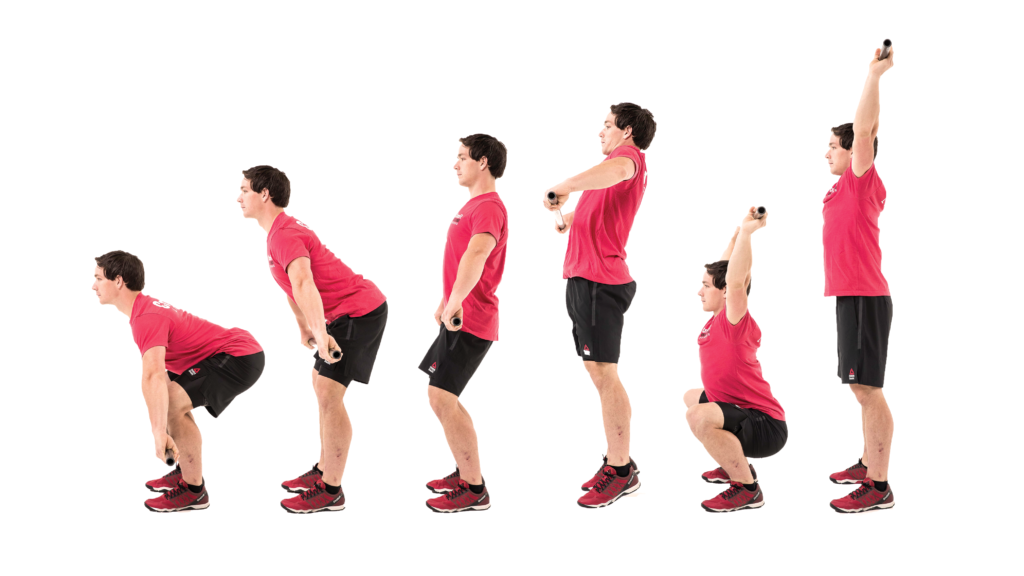
Introduction
In the world of CrossFit, few movements demand as much attention and technique as the snatch. This dynamic exercise combines strength, speed, and precision, making it a cornerstone of CrossFit training. In this article, we’ll delve into the intricacies of the snatch, exploring its benefits, techniques, and tips for mastering this challenging yet rewarding movement.
Understanding the Snatch
At its core, the snatch is a full-body movement that involves lifting a weighted barbell from the ground to overhead in one swift motion. Unlike traditional weightlifting exercises, such as the clean and jerk, the snatch requires a wide grip and a rapid transition between the pulling and receiving phases. This explosive movement targets multiple muscle groups simultaneously, making it an efficient and effective exercise for building strength, power, and athleticism.
Benefits of the Snatch
The snatch offers a myriad of benefits for athletes of all levels. Firstly, it promotes full-body coordination and proprioception, as it requires precise timing and technique to execute properly. Additionally, the snatch builds explosive power in the hips, shoulders, and legs, which translates to improved performance in other athletic endeavors. Moreover, the snatch is a highly functional exercise that mimics real-world movements, making it ideal for athletes looking to enhance their overall fitness and athleticism.
Technique Breakdown
To perform the snatch correctly, athletes must master a series of complex movements, including the pull, the transition, and the overhead squat. The pull phase involves explosively extending the hips and knees while simultaneously shrugging the shoulders and pulling the barbell upwards. As the barbell reaches its peak height, athletes must quickly transition underneath the barbell, dropping into a deep squat position to catch the weight overhead. Finally, athletes must stabilize the weight overhead by locking out the elbows and engaging the core and shoulders.
Common Mistakes to Avoid
While the snatch is a highly effective exercise, it can also be challenging to master, especially for beginners. Common mistakes include improper grip width, premature arm bending, and inadequate hip extension. Additionally, athletes may struggle with mobility restrictions, such as limited ankle dorsiflexion or shoulder mobility, which can impact their ability to perform the snatch safely and effectively. By focusing on proper technique, gradually increasing weight, and addressing mobility limitations, athletes can mitigate the risk of injury and maximize their performance in the snatch.
Progression and Programming
Like any complex movement, mastering the snatch requires patience, dedication, and consistent practice. Beginners should start with light weights and focus on mastering the basic mechanics of the movement before gradually increasing intensity. Incorporating snatch variations, such as hang snatches or power snatches, can help athletes develop specific aspects of the movement while reducing the risk of overuse injuries. Additionally, programming should include a balance of snatch-focused workouts, accessory exercises, and recovery protocols to ensure optimal progress and performance.
Tips for Success
To excel in the snatch, athletes must prioritize technique, consistency, and mental focus. Practicing drills and mobility exercises can improve movement efficiency and address weaknesses, while visualizing successful lifts can enhance confidence and mental toughness. Moreover, seeking guidance from experienced coaches and peers can provide valuable feedback and support throughout the learning process. With dedication and perseverance, athletes can unlock their full potential in the snatch and achieve new levels of strength, power, and athleticism.
Conclusion
The snatch is more than just a weightlifting exercise—it’s a test of strength, speed, and skill that challenges athletes both physically and mentally. By understanding its mechanics, benefits, and techniques, athletes can unlock the full potential of the snatch and take their CrossFit training to new heights. So, lace up your lifting shoes, chalk up your hands, and embrace the challenge of mastering the snatch. Read more about snatch crossfit



